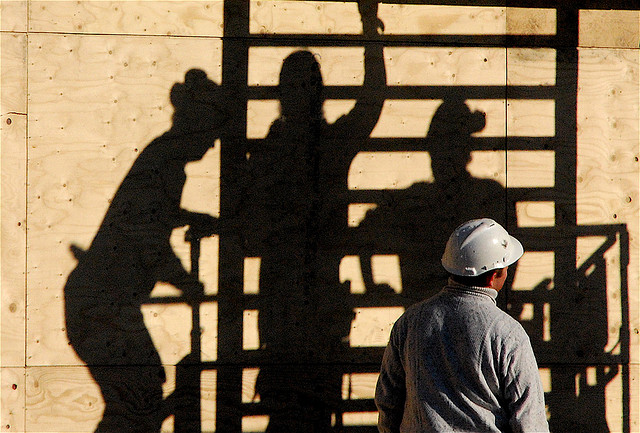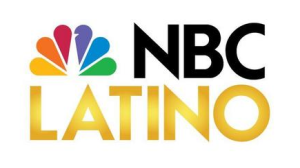A look at economic inequality, through a Latino lens

 By Claudio Iván Remeseira, NBCLatino
By Claudio Iván Remeseira, NBCLatino
President Obama has been taking to the road urging action to reduce wage disparities. In a recent interview for the New York Times , he worried that “years of widening income inequality and the enduring effects of the financial crisis had torn the nation’s social fabric and undercut Americans’ faith in greater opportunity.”
When you look at inequality through the lens of race and ethnicity, Latinos are among the hardest hit, say experts.
Between 2008 and 2010, non-Hispanic whites comprised 64 percent of the U.S. population and earned 76 percent of its wages, according to Sentier Research. Hispanics, at 16 percent of the population, received 9 percent of the earning pie, just one point above African Americans. Asian Americans earned slightly more than the 5 percent of their population share.
“Latinos are at the low end of income distribution and are more likely to be unemployed—and thus have no income—than any other group except African Americans,” says Adriana D. Kugler, Vice-Provost and Professor of Public Policy at Georgetown University. Until recently, Dr. Kugler was Chief Economist at the US Department of Labor under former Labor Secretary Hilda Solís, one of the top Latinas in Obama’s first Administration.
Latino unemployment rate is currently at a four-year low, but it’s still 38 percent higher than the unemployment rate for white workers. Even when employed, says Kugler, Latinos earn less than other groups: their median weekly earnings are $572 compared to $799 for non-Hispanic white workers. Latinos are also more likely to earn the minimum wage than most other groups.
And while income represents the amount of cash a person or family has at any given time, wealth (total assets minus debts ) is a long-term indication of economic well-being and social mobility. Here, too, Latinos and blacks lag behind. In 2010, non-Hispanic whites on average had two times the income of the other two groups, but six times the wealth. “Today,” says Kugler, “the median wealth of white households is 15 times that of Hispanic households.”
The other side of the coin is the racially unequal rise in poverty: In 2010, 27.4 percent of blacks and 26.6 percent of Hispanics were poor, compared to 9.9 percent of non-Hispanic whites and 12.1 percent of Asians, according to the National Poverty Center.
Undocumented immigrants are the most vulnerable group, says Kugler, not only because they are in general low-skilled workers unable to get good-earning jobs, but also because their lack of information or their reluctance to complain for fear of deportation make them easy prey for employers’ abuse.
“In the long run, the key to reduce income inequality is educational attainment,” says Kugler. Despite the progress made on this area, there’s still a long way to go: only 15 percent of Latinos have a college degree or more. “In the meantime, we need to offer short-term training programs that help people get higher paying jobs,” adds the labor expert.
In the short-term, center-left policy analysts and Democratic legislators advocate several programs to help those at the lower end of the socio-economic scale. These include transfer programs that provide some income during out-of-work periods or remedial programs such asTemporary Assistance to Needy Family (TANF), increased unemployment and health insurance for all. “Thirty percent of Latino workers are still uninsured, compared to 11 percent of whites,” says Kugler.
But conservative policy analysts and Republican legislators have a very different take on what is contributing to current income inequality and do not think expanding government programs is the answer.
“We have stagnant wages because the government under Obama has exploded, ” says Alfonso Aguilar, executive director of the Latino Partnership for Conservative Principles. “We have Obamacare and that has a big impact on companies reducing hours and cutting employees. We have more regulation and at the same time it’s also harder for private sector to get the credit they need,” says Aguilar.
On expanding programs like food stamps and unemployment, “instead of helping them it creates a culture of dependence. It doesn’t help people get out – the safety net has become a way of living,” Aguilar adds.
Congress is very divided on how to tackle the nation’s growing income disparities. In the meantime, experts like sociologist Donald Hernandez worry about the implications for Latinos – and the country. His recent study shows children of immigrants start childhood with distinct advantages, but many of these are wiped out due to socio-economic circumstances.
This article was first published in NBCLatino.
Claudio Iván Remeseira is a New York-based award-winning journalist, writer, and critic. He is the translator of the Spanish-language on-line section of The Nation and editor of Hispanic New York, an online portal and blog on current events and culture. He is the Editor of Hispanic New York: A Sourcebook (Columbia University Press, 2010), an anthology of essays on the city’s Latino, Latin American & Iberian cultural heritage, and winner of the Latino International Book Award in the category of Best Reference Book in English (2011).
[Photo by AstridWestvang]
